In the annals of intrepid explorers, Isabella Bird stands as a truly remarkable figure. A formidable Englishwoman who defied the conventions of her era, Bird embarked on a solitary 800-mile horseback odyssey through the rugged Front Range of Colorado in 1873. At a time when the Colorado gold rush was in full swing and the landscape was still raw and untamed, her journey was nothing short of miraculous. For anyone captivated by history, adventure, and the enduring spirit of exploration, tracing the path of isabella bird colorado offers a profound connection to the past and an unforgettable modern travel experience.
Bird meticulously documented her adventures in her compelling book, A Lady’s Life in the Rocky Mountains, capturing the breathtaking scenery, the challenging conditions, and the fascinating, often rough, characters she encountered. While she braved the unforgiving Colorado winter, enduring frozen feet and battling snowdrifts, my own journey to follow in her tracks took place in the vibrant autumn, when the mountains ignite with the fiery gold of turning aspen leaves. This contrast between her arduous winter trek and a contemporary fall exploration highlights just how dramatically the experience of traversing isabella bird colorado has changed, yet how the essence of the landscape remains.
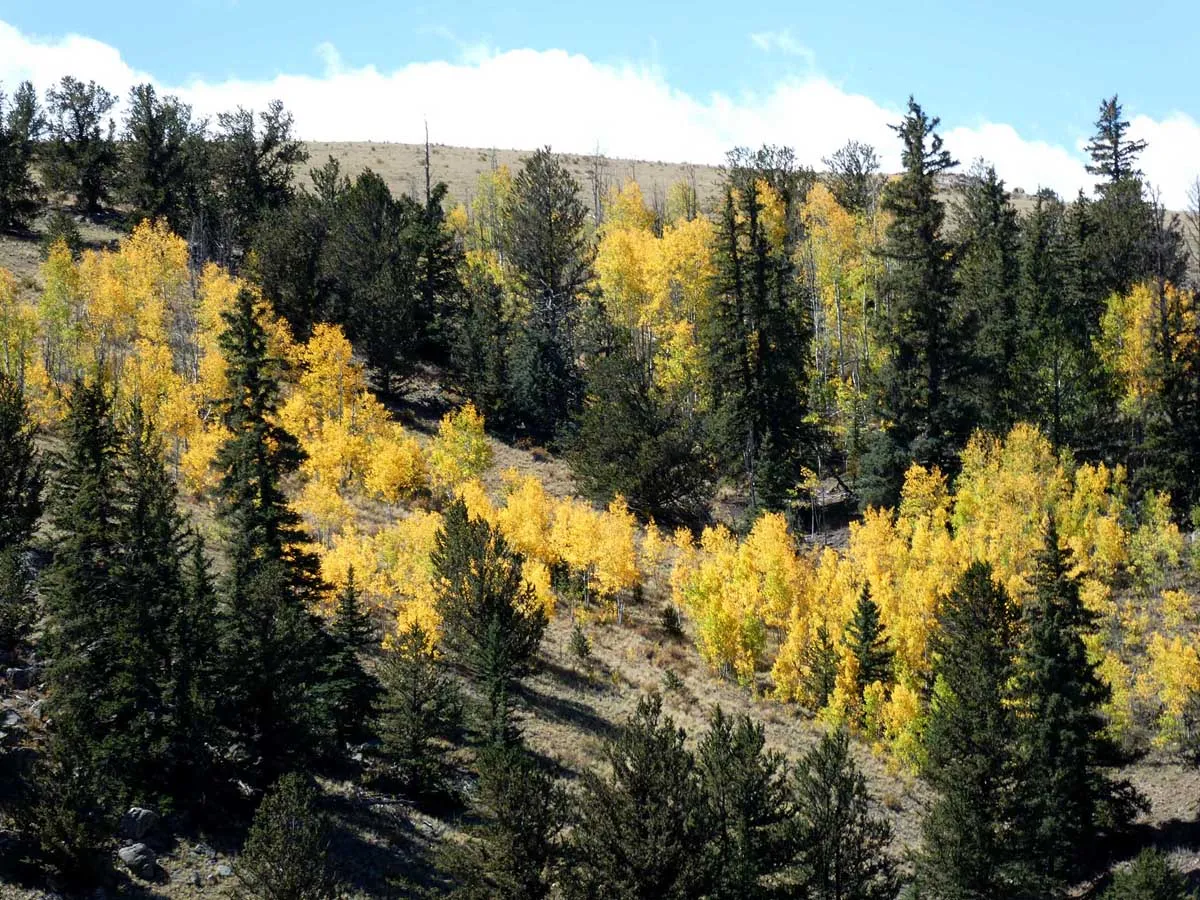
Fall color transforms the landscape in Tarryall, Colorado
Who Was Isabella Bird? An Extraordinary Victorian Explorer
Born in 1831, Isabella Bird was far from the typical Victorian gentlewoman. Plagued by ill health for much of her life, she found that travel offered her the greatest relief and vitality. She traveled extensively across the globe, including North America, Asia, and the Middle East, documenting her experiences in a series of popular books. Her journey through the Colorado Rockies was undertaken partly for health reasons but quickly became an adventure of self-discovery and a deep appreciation for the wild American West.
Her ability to navigate challenging terrain, interact with notorious figures, and articulate her experiences with vivid clarity cemented her reputation as a pioneering female explorer and writer. Her observations on the landscape and the people of Colorado in the late 19th century provide an invaluable historical snapshot.
 Historical image of Isabella Bird, the famous explorer known for her travels in Colorado
Historical image of Isabella Bird, the famous explorer known for her travels in Colorado
Retracing Isabella Bird Colorado: The Historic Trail
My journey following the ghost of isabella bird colorado began west of Denver. I took I-70 to Highway 285, a route that partially mirrors the historic Denver Stage Coach road Bird described as the most difficult part of her mountain tour. She faced shoulder-high snow and freight wagon tracks often obscured by drifts. Today, Highway 285 offers a smooth, scenic drive, climbing steadily towards the high country.
Exploring Isabella Bird Colorado – Tracing a Lady’s Life in the Rockies
The drive along Highway 285 traces the energetic Platte River, a lifeline through the landscape. While much of the riverfront is private property today, limiting direct access, it provides a beautiful backdrop to the highway before reaching Kenosha Pass. At the Kenosha summit, you can pull off at the Colorado Trailhead, a popular spot offering access to adventurous hikes and stunning panoramic views – a far cry from the arduous, snow-bound passage Isabella Bird faced.
South Park’s Vastness and Golden Past
Cresting Kenosha Pass reveals the immense expanse of South Park. This vast, treeless, high-altitude plain, encircled by mountains, feels ancient and otherworldly. It was historically a crucial summer hunting ground for Native Americans. While the large herds of elk and other game Bird might have seen are less common in the open plains today, I was fortunate enough to spot a peaceful herd of pronghorn antelope grazing.
When Isabella Bird arrived in 1873, South Park was dotted with mining camps established during the 1859 gold rush in areas like the Tarryall Valley. Her journey here included an unforgettable companionship with “Comanche Bill,” a notorious frontiersman armed to the teeth – a testament to the wild and often lawless nature of the region at the time. The landscape itself, though less populated by transient miners, retains its grandeur and sense of isolation, allowing one to imagine the challenges faced by early travelers.
Discover the Best Overnight Summer Camps in Texas
Your Ultimate Guide to Oktoberfest Los Angeles 2024
Discover the Best Things to See in Sarasota
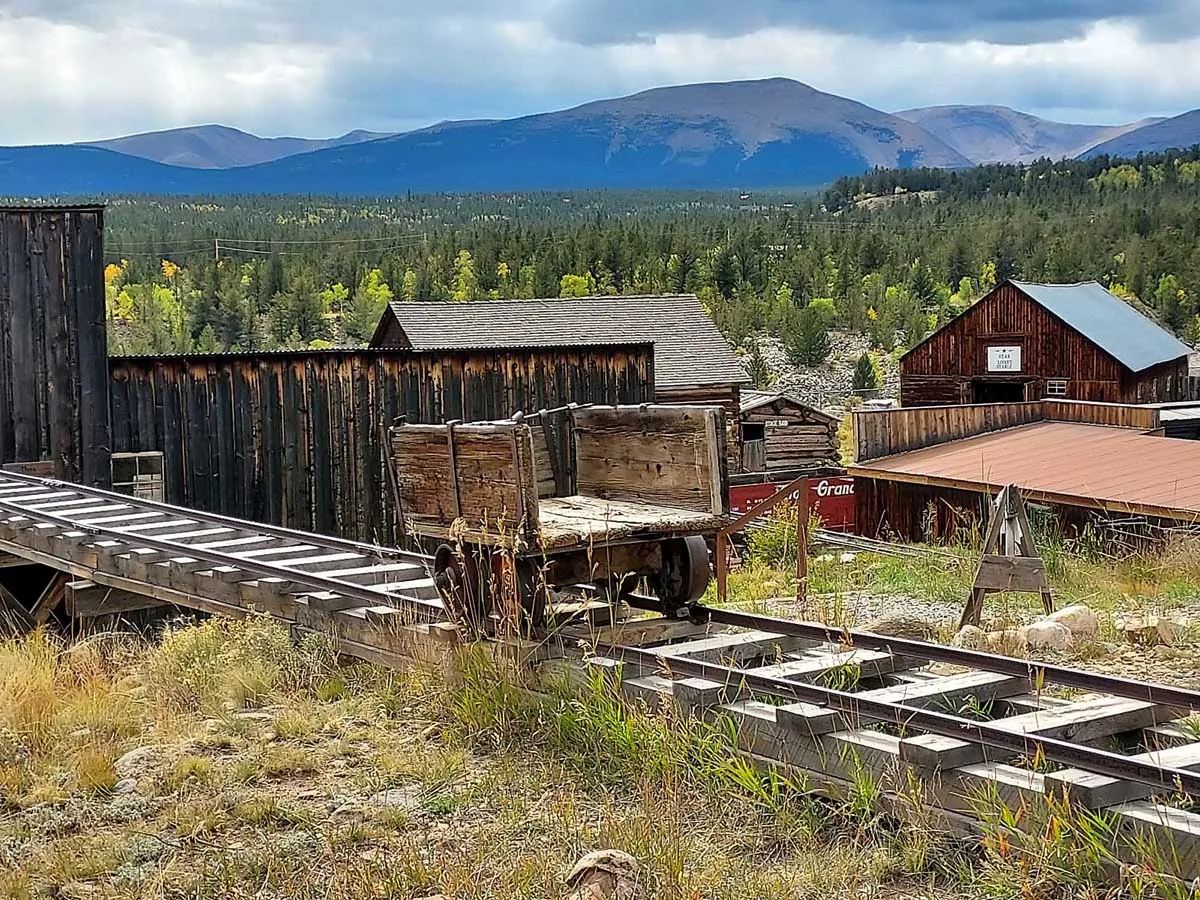 The South Park City Museum in Fairplay, Colorado, depicting an 1800s mining town
The South Park City Museum in Fairplay, Colorado, depicting an 1800s mining town
Tarryall Valley’s Echoes of the Past
Turning off onto Highway 77 at the tiny settlement of Jefferson, the road snakes through the beautiful Tarryall Valley. This less-traveled byway meanders through rust-colored meadows, split by a gentle stream, and is flanked by distinctive, pudgy brown cliffs. Unlike the busier main highways, this route allows for a slower pace, inviting contemplation of the landscape. Dilapidated, weathered cabins scattered along the roadside stand as silent witnesses to the mining days Isabella Bird rode through. While the Tarryall Reservoir is now a tranquil spot for recreation, these remnants provide a tangible link to the era Bird described.
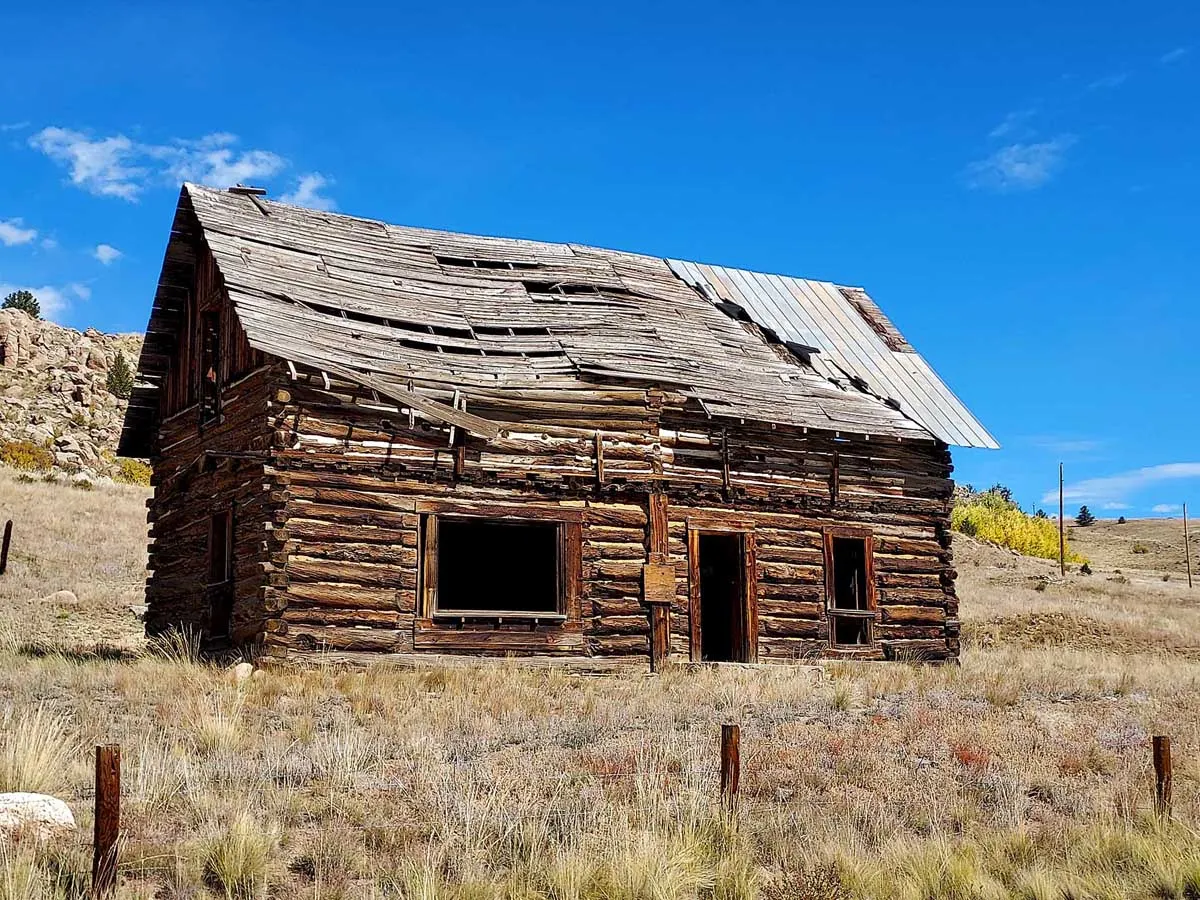 A weathered, historic cabin standing in Tarryall Valley, Colorado
A weathered, historic cabin standing in Tarryall Valley, Colorado
Fairplay: Where History Comes Alive
My journey continued to Fairplay, a town central to the history of isabella bird colorado. In Bird’s time, Fairplay was a rough frontier town known for ruffians and vigilante justice, where public hangings were a reality. Today, Fairplay is a charming historical stop. I stayed at the Hand Hotel, a historic establishment dating back to 1879, just six years after Bird’s visit, allowing a modern visitor a comfortable connection to the town’s past.
The true highlight for anyone interested in the history of the area, and particularly the era Isabella Bird witnessed, is the South Park City Museum. This outdoor museum is a meticulously preserved collection of 43 original 1800s structures, carefully relocated and restored to create a realistic depiction of a Colorado mining town. For a small fee, you can wander through these buildings, gaining an immersive sense of the daily life, architecture, and challenges faced by the residents during the very time Bird was passing through. It’s a powerful way to visualize the world she documented.
 Historical buildings at the South Park City Museum in Fairplay, Colorado
Historical buildings at the South Park City Museum in Fairplay, Colorado
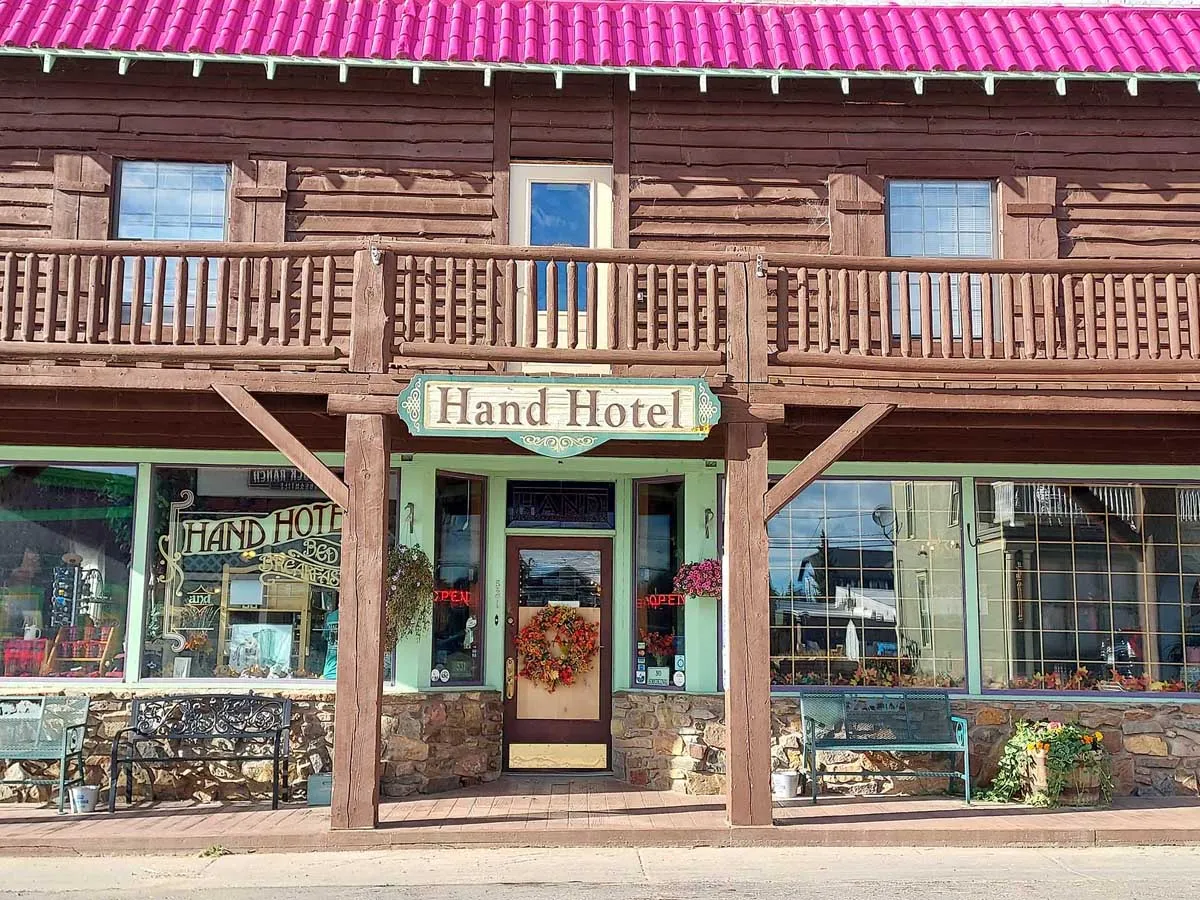 The historic Hand Hotel in Fairplay, Colorado
The historic Hand Hotel in Fairplay, Colorado
Following the Peaks to Modern Mountain Towns
Leaving Fairplay, my route took me toward the popular mountain town of Breckenridge via Highway 9. This stretch offers dramatic scenery, particularly in the fall with swaths of bright yellow aspen cutting paths through the dark evergreen forests. The road can be challenging with steep descents and sharp turns, but the visual reward is immense. A brief stop in Breckenridge allowed for a refreshing walk along its charming riverwalk, a modern amenity in a town with deep mining roots.
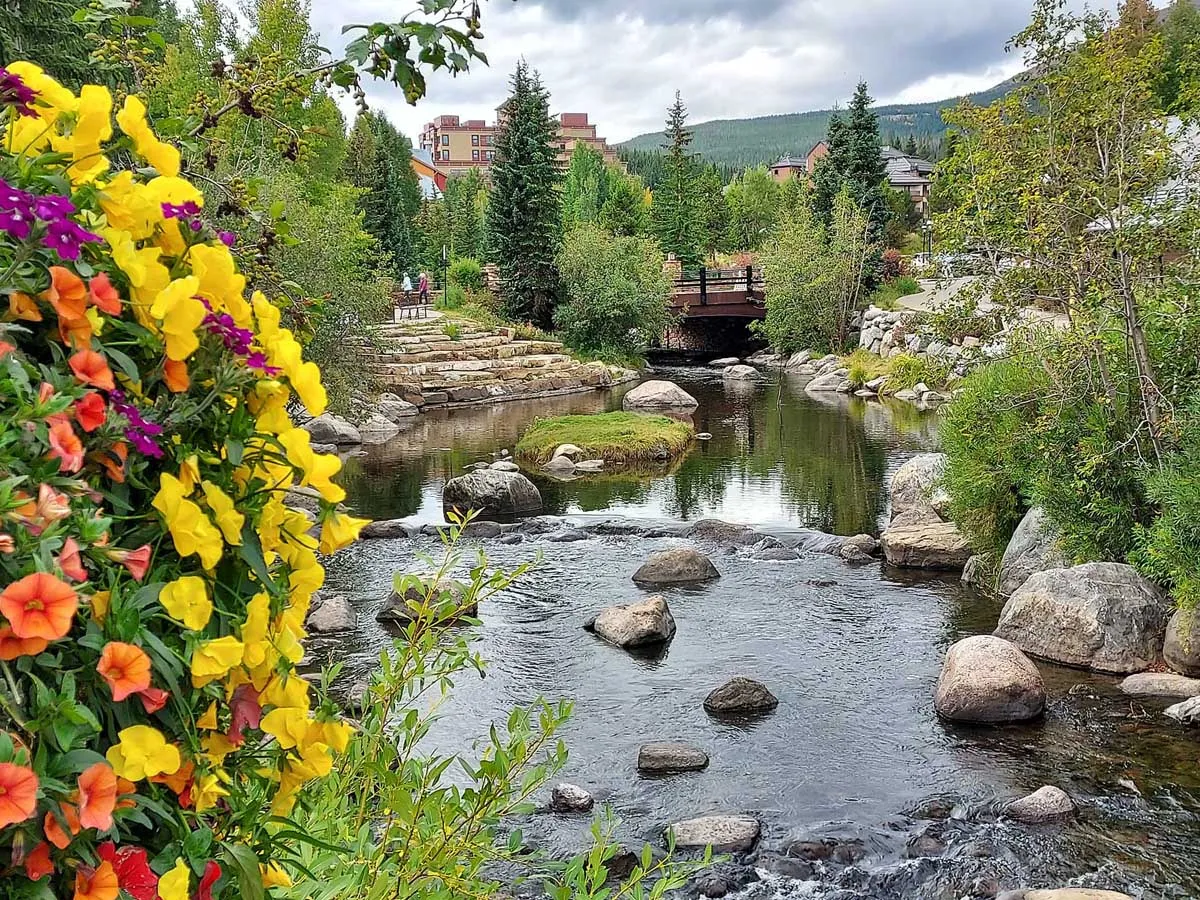 The scenic River Walk in Breckenridge, Colorado
The scenic River Walk in Breckenridge, Colorado
From Breckenridge, I pressed on towards Highway 119, the start of the glorious Peak-to-Peak Scenic Byway. Before reaching it, a stop in Georgetown offered another glimpse into Victorian Colorado. Georgetown boasts some of the state’s most beautifully restored Victorian homes. Fortifying myself with a BBQ lunch here provided energy for the drive ahead.
Georgetown is also home to the popular Georgetown Loop Railroad, a narrow-gauge heritage train that puffs its way through stunning mountain scenery of aspen, spruce, and pine – a delightful experience for all ages. Isabella Bird passed through this area on her way to attempt the climb to Green Lake. Despite warnings about the difficulty and the conditions, she was undaunted. Her arduous trek through snowdrifts ultimately led her to a frozen lake, a testament to the harsh realities of winter travel she faced.
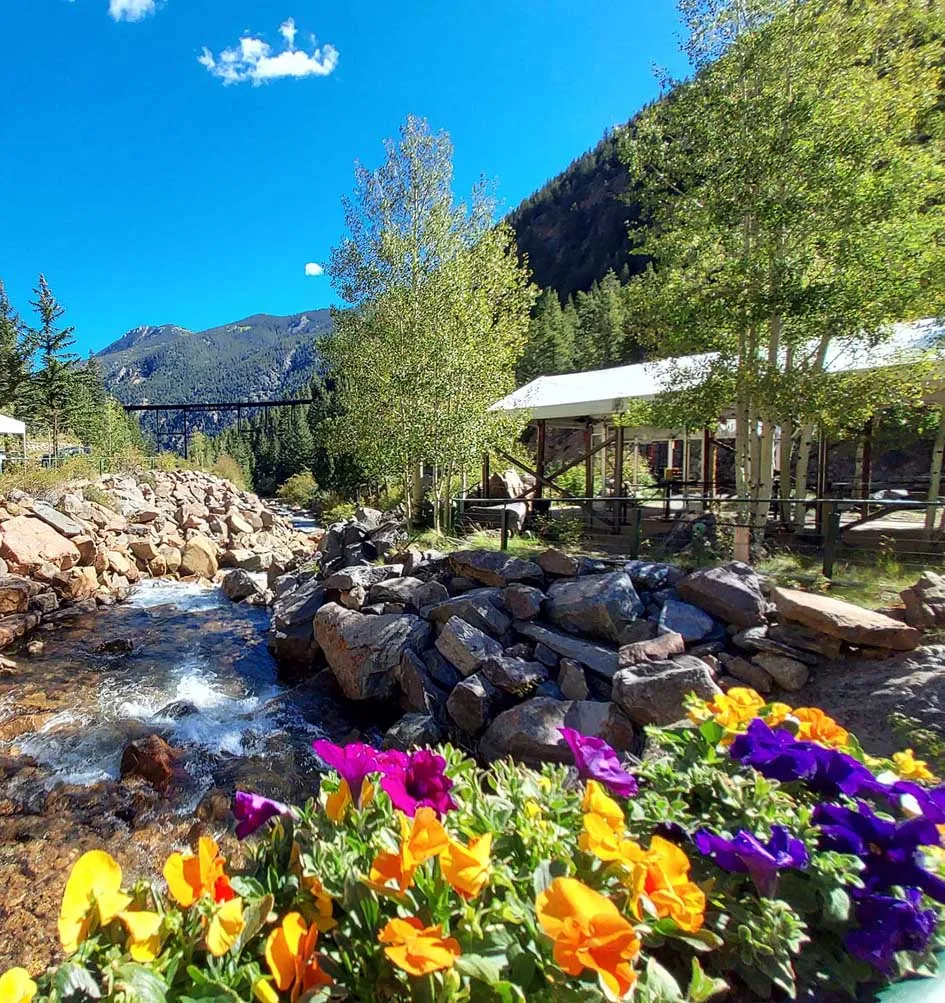 Georgetown Loop Train Station and Trestle in Georgetown, Colorado
Georgetown Loop Train Station and Trestle in Georgetown, Colorado
The short drive from Georgetown through Central City leads directly to the Peak-to-Peak Highway (Highway 119, which becomes Highway 7), one of Colorado’s most glorious scenic drives. This highway ultimately delivers you to Estes Park, the town where Isabella Bird began and ended her extraordinary mountain tour.
Bird averaged about 25 miles a day on her steadfast mare, Birdie, completing her journey in approximately a month. On particularly terrible days, she sometimes had to ride fifty miles to find a cabin with a welcoming light. Experiencing the vast distances and daunting landscapes, even from the comfort of a modern vehicle, only deepens one’s admiration for her sheer determination and physical endurance.
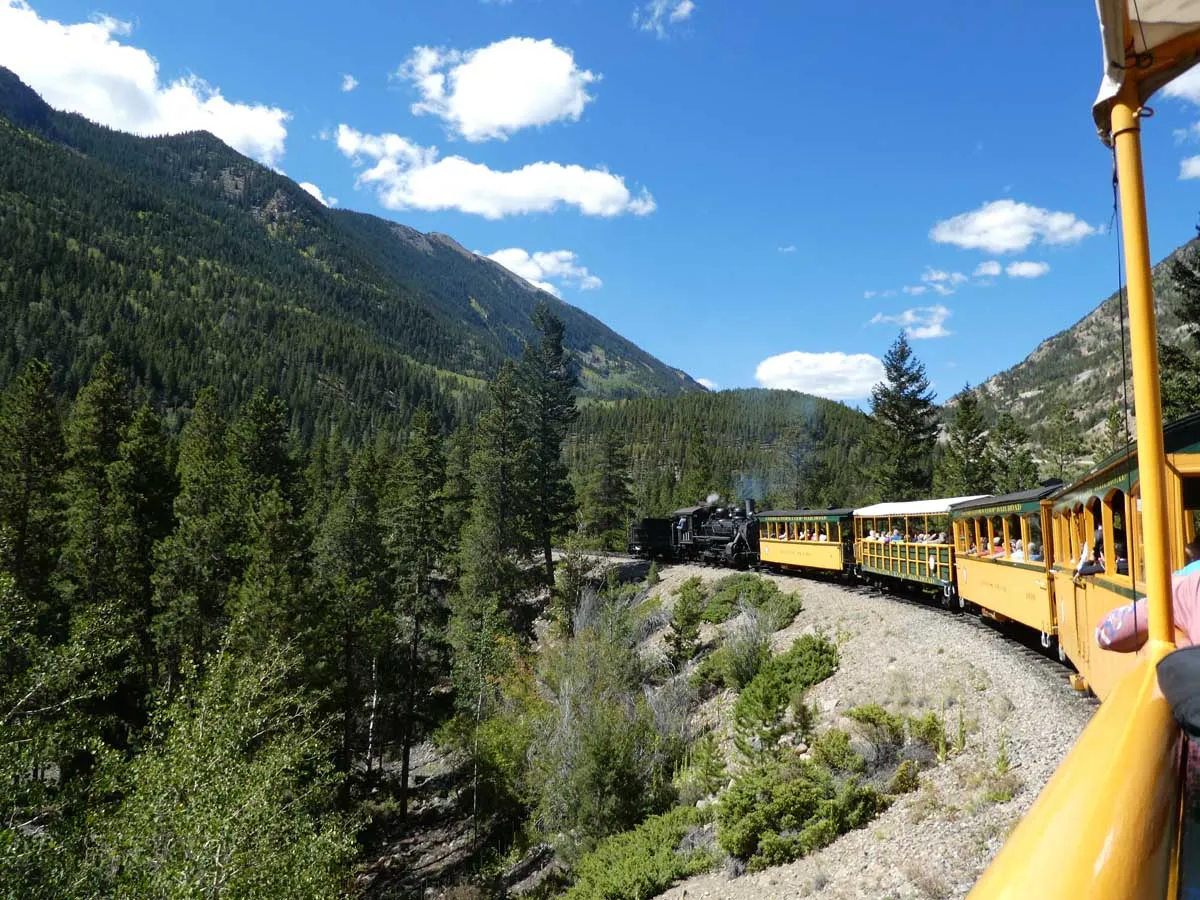 The historic Georgetown Loop Train traveling through the Colorado mountains
The historic Georgetown Loop Train traveling through the Colorado mountains
Estes Park and the Legacy of Isabella Bird Colorado
Isabella Bird herself declared the Front Range, with its dramatic ascents, rushing rivers, and imposing peaks, an absolute must-see. Yet, she held a special affection for Estes Park, deeming it the “fairest.” Today, Estes Park serves as the vibrant gateway to the majestic Rocky Mountain National Park, offering countless miles of well-maintained trails leading to stunning lakes and waterfalls accessible to hikers of all levels.
Bird’s powerful descriptions of the area in her letters, later published as A Lady’s Life in the Rocky Mountains, played a significant role in attracting attention to the region. It is often said that her writings helped draw throngs of tourists and inspired subsequent writers and nature enthusiasts, contributing to the eventual preservation and establishment of Rocky Mountain National Park. In a way, she is considered a foundational figure in making the wonders of isabella bird colorado accessible to the wider world. Her legacy is even marked with a statue in Estes Park, a tribute to her pioneering spirit and lasting impact.
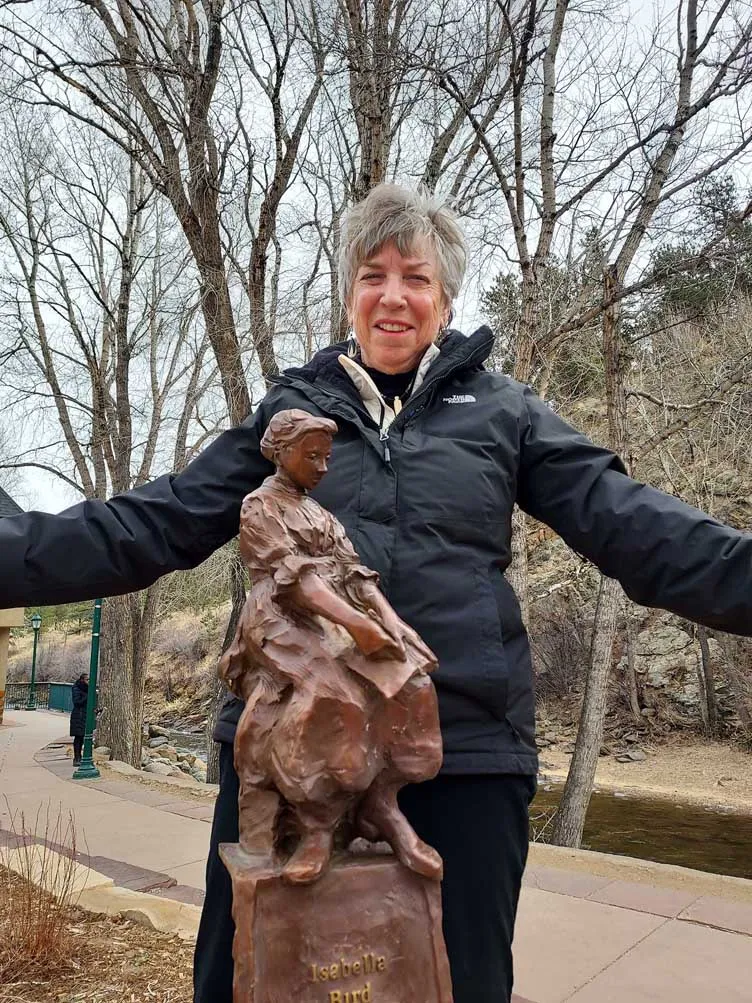 Linda Ballou with a statue commemorating Isabella Bird in Estes Park, Colorado
Linda Ballou with a statue commemorating Isabella Bird in Estes Park, Colorado
Experiencing Colorado Today Through Bird’s Eyes
Tracing the route taken by isabella bird colorado offers a unique travel experience that blends breathtaking scenery with a deep connection to history. While modern travel is incomparably easier and more comfortable than Bird’s 1873 trek, the core elements of the landscape – the soaring peaks, wide valleys, and vast skies – remain largely unchanged. Visiting the historic towns, museums, and natural landmarks she described allows you to walk, or ride, in her footsteps and gain a profound appreciation for her incredible journey and the enduring spirit of the American West. It’s a journey that is as much about exploring the outer landscape as it is about reflecting on the courage and resilience of those who came before.
Frequently Asked Questions about Isabella Bird and Colorado
- When did Isabella Bird travel in Colorado?
Isabella Bird’s primary journey through the Colorado Rockies that is most famously documented took place in the autumn and winter of 1873. - What is her book about Colorado called?
Her widely celebrated book detailing her experiences in the region is titled A Lady’s Life in the Rocky Mountains. - What route did Isabella Bird take in Colorado?
Isabella Bird’s journey covered approximately 800 miles, primarily through the Front Range of Colorado. Her route included areas around Denver, South Park, Fairplay, Georgetown, and Estes Park, often following early roads and trails. - Can you visit the places Isabella Bird wrote about today?
Yes, many of the towns, landscapes, and natural areas that Isabella Bird described in her book, such as Estes Park, Fairplay, Georgetown, and South Park, are popular travel destinations today, allowing visitors to retrace aspects of her historic journey.
